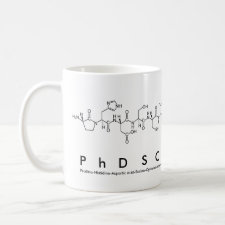
Authors: Shamsipur M, Besharati-Seidani A
Article Title: Synthesis of a novel nanostructured ion-imprinted polymer for very fast and highly selective recognition of copper(II) ions in aqueous media.
Publication date: 2011
Journal: Reactive and Functional Polymers
Volume: 71
Issue: (2)
Page numbers: 131-139.
DOI: 10.1016/j.reactfunctpolym.2010.11.002
Alternative URL: http://www.sciencedirect.com/science/article/B6TY0-51H7043-1/2/2af8ffaba7a7f50d7c8e755df4aa0a82
Abstract: This work reports the preparation of a new Cu2+-imprinted polymeric (IIP) nanoparticles, using 1,4-dihydroxy-9,10-anthraquinone (quinizarin; QZ) as a ligand. The Cu2+ ion found to form a stable 1:1 complex with QZ in dimethylsulfoxide solution. The resulting Cu2+-QZ complex was polymerized with ethyleneglycol dimethacrylate, as a cross-linking monomer, via precipitation polymerization method. The imprint copper ion was removed from the polymeric matrix using 0.1 M HNO3. The Cu2+-imprinted polymeric nanoparticles were characterized by IR spectroscopy, scanning electron microscopy (SEM), N2 adsorption-desorption isotherms and elemental analysis. The SEM micrographs showed colloidal nanoparticles of 60-110 nm in diameter and slightly irregular in shape. Optimum pH for maximum sorption was 7.0. Sorption and desorption of Cu2+ ion on the IIP nanoparticles were quite fast and achieved completely over entire investigated time periods of 2-30 min. Maximum sorbent capacity and enrichment factor for Cu2+ were 346.3 μmol g-1 and 18.4, respectively. The relative standard deviation and detection limit (3σ) of the method were evaluated as 0.97% and 0.3 ng mL-1, respectively. It was found that imprinting results in increased affinity of the material toward Cu2+ ion over other competitor metal ions with the same charge and close ionic radius. The prepared IIP was repeatedly used and regenerated for 12 times without a significant decrease in polymer binding affinity
Template and target information: copper ion, Cu(II)
Author keywords: Cu2+, Ion-imprinted polymeric nanoparticles, precipitation polymerization, Inductively coupled plasma-atomic emission spectrometry, adsorption isotherm



Join the Society for Molecular Imprinting

New items RSS feed
Sign-up for e-mail updates:
Choose between receiving an occasional newsletter or more frequent e-mail alerts.
Click here to go to the sign-up page.
Is your name elemental or peptidic? Enter your name and find out by clicking either of the buttons below!
Other products you may like:
 MIPdatabase
MIPdatabase









